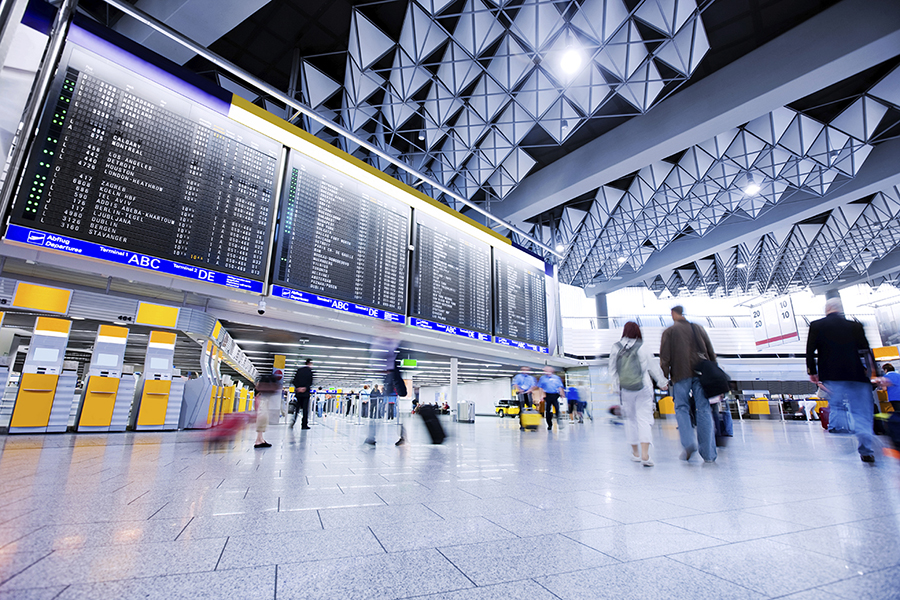As we move into the third decade of the millennium, we’ve witnessed a digital revolution, with unprecedented leaps in technology in recent years. While the air transport industry often works on the cutting edge, making it easy for people to fly, there’s no doubt that the operational side of our industry hasn’t kept pace with technology.
Added to that, passengers today now fully expect a seamless digital experience, and airlines and airports need to develop a strong digital identity to engage them.
Given the trends, we in the industry are completely aware of the need to digitally transform. While some have started already, it’s now critical that the rest of the industry joins them, to remain competitive.
As highlighted in the SITA Air Transport IT insights survey last year, planned investments for growing business and enabling digital transformation will likely continue their upward trajectory. It’s safe to say that every airline and airport agrees that digital transformation is necessary.
But which areas to focus on and how to scope it? Below I share 4 key pillars which may help align digital transformation strategies, with some examples of how the right technologies can make a big difference.
1. Passenger experience
The core of our operations is to ensure that passengers have a comfortable travel experience. Passengers are increasingly younger and more tech-savvy. They expect a connected and seamless experience, and they want to be in control of their journey, with minimal time spent being processed at every step.
As we see in SITA’s white paper about air travel for a digital age, 83% of air transport executives and CIOs believe passenger demographics will impact their strategies by 2025. The paper also highlights an 8% improvement in passenger satisfaction at every touch point when passengers use new technology. In addition, the paper makes clear that the majority of passengers are happy to share their information for a better experience (using biometrics for processing, for instance).
For these ‘digital travelers’, there’s an incredible opportunity for airlines and airports to go beyond basic apps and to provide personalized experiences. Some ways in which we can achieve this are by integrating disparate operational systems, connecting these to customer facing interfaces. At the same time, we can leverage machine learning to create customer profiles and preference matrices.
What’s more, we can use tools like social media listening solutions to stay engaged with passengers beyond their ecosystem. And we can use omni-channel customer engagement platforms, allowing customers to engage on the channel of their choice while receiving a consistent experience. In short, as a vital pillar of digital transformation, we must bring new technology and new ways of thinking to create the experience customers now expect.
2. Collaboration and data
The next pillar of digital transformation that I suggest is collaboration and data. Good collaboration is essential across the multiple teams, functions and physical locations in the air transport industry. They need to work together more closely than ever if we’re going to radically enhance the passenger experience and operational efficiencies.
And let’s not forget the data, of course. Every airline and airport today has massive amounts of operational, situational and passenger data. This data offers powerful opportunities to our industry, because we can extract value from it and share that data to drive operational efficiencies.
Digital transformation has the potential to revolutionize the way our teams operate today. It can deliver the information that airlines and airports need, while enabling sharing to implement collaboration concepts like Airport-Collaborative Decision Making (A-CDM) and Total Airport Management (TAM).
The first step of any digital transformation initiative is to assemble and integrate internal and external data. It’s a much easier task now thanks to the wide availability of APIs and other standard interfaces used by most leading systems.
Once you’ve accumulated the data, then business intelligence and analytics tools can be employed to extract powerful insights. On top of that, machine learning models can be trained to predict and even prescribe the best course of action for situations such as disruption.
Fed back into collaboration tools, this information and insight , can be extremely powerful in empowering teams to function better and take better decisions.
Blockchain is a good fit here as it’s redefining how different stakeholders can share information safely. A great example is SITA’s recently launched MRO blockchain alliance, which shows the huge potential of technologies in fostering collaboration and data sharing.
3. Operational efficiency
With passenger numbers doubling over the next couple of decades, most airlines and airports are reaching capacity and simply can’t scale up their physical infrastructure to meet demand. It means they must become more efficient in using existing resources to extract maximum potential from them.
A lot can be done by adopting new technologies in areas like passenger processing, aircraft turnaround and airport management. These are not only good for improving the passenger experience but they also have an obvious positive impact on earnings and costs.
We can drive operational efficiencies through new systems that use advanced technologies, like biometrics, for faster passenger identification and processing. Mobile and IoT can allow situational awareness and better resource management. Data from these sources allows machine learning to identify optimal resource utilization while also automating some of the management. Added to that, as I said, there’s the opportunity for this artificial intelligence (AI) technology to predict future scenarios and suggest best course of action.
Capacity issues become most evident in times of disruption, leading to turnaround delays, stranded passengers and frustrating experiences. New solutions using AI for accurate flight prediction can allow airlines and airports to plan in advance. Disruption management solutions allow better management of passengers by digitizing physical processes such as voucher management, and chatbots can reduce load on customer service. The opportunities to digitize operations are ready to be embraced.
4. People
My fourth pillar in the digital transformation of air transport is people. In the end, every great tool is only as good as the person who wields it. So as we digitally transform, it’s crucial to train people and empower them with the right facilities and capabilities to utilize the new solutions.
We must also remember that the implementation of a digital transformation initiative must be tackled by a cross-functional and driven team. Only then can you ensure that there’s consideration and knowledge of how a new solution will affect different areas; you can then make the best adjustments to get the most efficient outcome. Very often these initiatives are driven mainly by the IT departments, and that can create challenges in other functions.
We all know that change is often difficult to drive. For that reason, a digital transformation initiative must include a change management program – not only to put the new tools in place, but also to ensure that processes and people can adapt to newer and better ways of working.
So, as you prepare to launch a digital transformation initiative, these are my 4 recommended pillars to help define its boundaries for maximum value. We’ve seen that it works and it’s clear to us that they’re integral to any approach to digitally transform the air transport industry.





 Share
Share






0 Comments